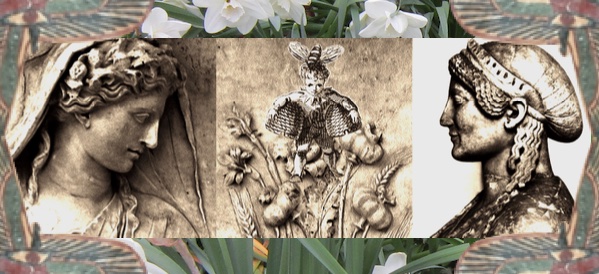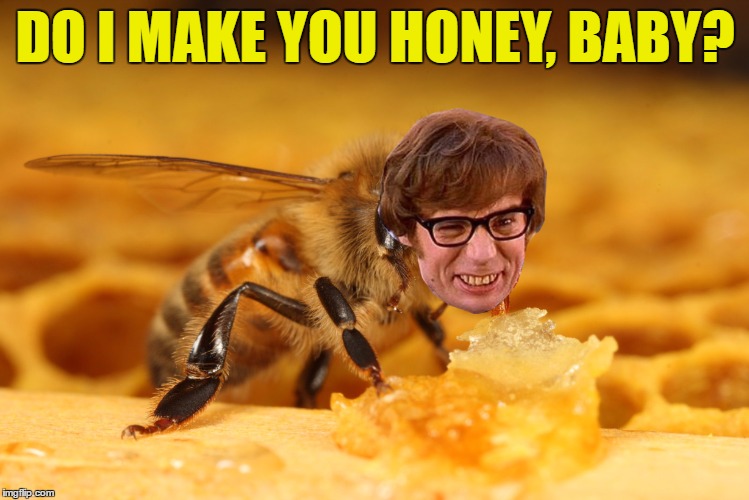O Crown of Light, O Darkened One,
I never thought we’d meet.
You kiss my lips, and then it’s done:
I’m back on Boogie Street.
The Lover/L’Amoureux has typically been interpreted as Hercules (Herakles) at the Crossroads, or an emblematic representation of the choice between vice and virtue. Other theories abound – that the young man is choosing between an older and younger woman, or the older woman is bequeathing her daughter. It’s been debated, also, whether the word is singular or plural. [Answer: singular, although it can also be used as plural.] Here it most likely refers to the central character; ‘the loving one’, ‘the amorous one’, ‘the lover’. But the triad is also important.
While these explanations are adequate, if we want to know what lies beneath the surface, we must, as always, pay attention to the details in this version of the card, which are ‘hidden in plain sight.’
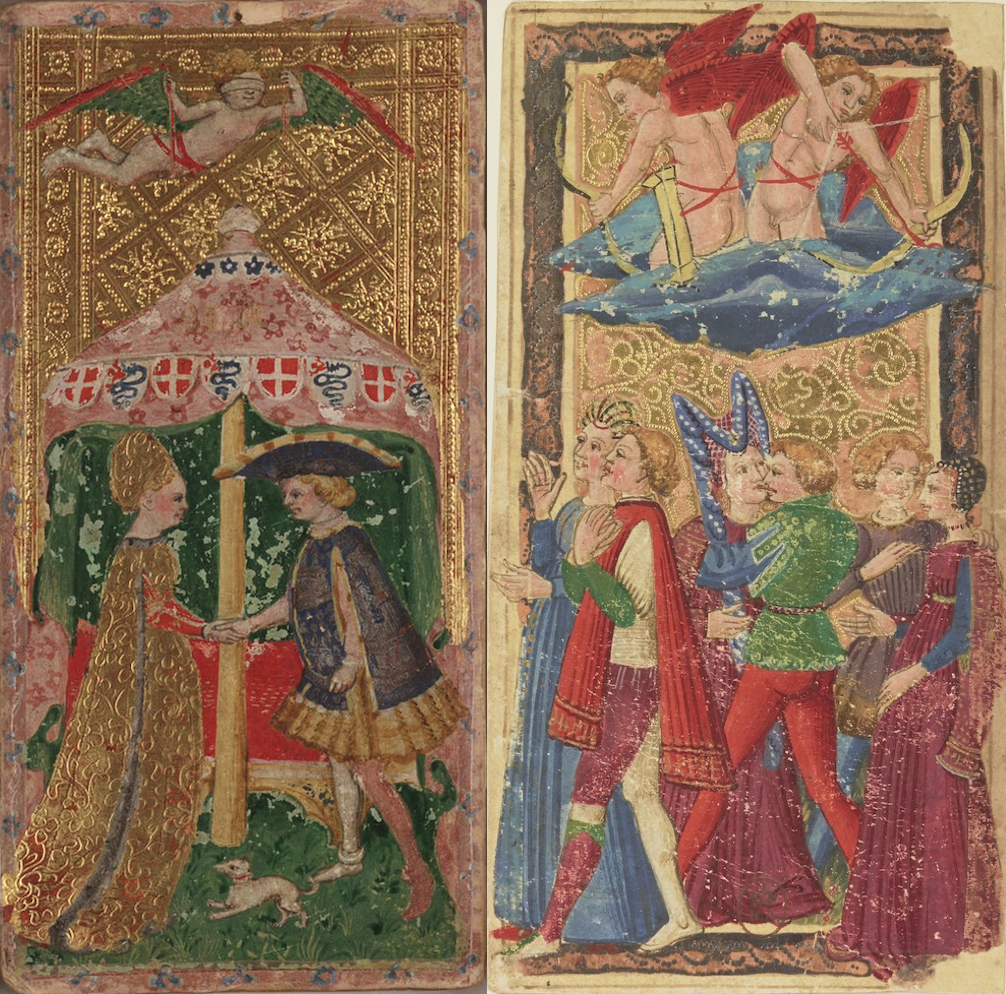
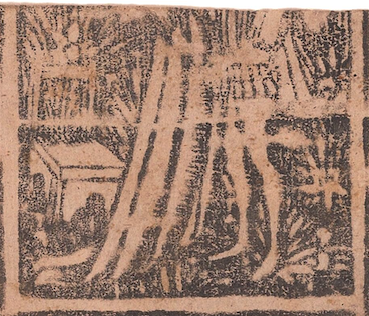
First, let’s look at the Visconti-Sforza and Charles VI cards, which offer few, but relevant clues. The V-S depicts the actual people for whom the deck was commissioned, Bianca Maria Visconti and Francesco Sforza, who were married in 1441 to unite the Visconti and Sforza families. This has nothing to do with the eventual TdM theme, except that it may have been inspired by Tristan and Isolde (very popular in Italy at the time), also likely the subject of the Cary fragment. In the legend, Tristan is delivering Isolde to a king to be married, but the two of them drink a love potion en route and tragic, ‘courtly love’, ensues.
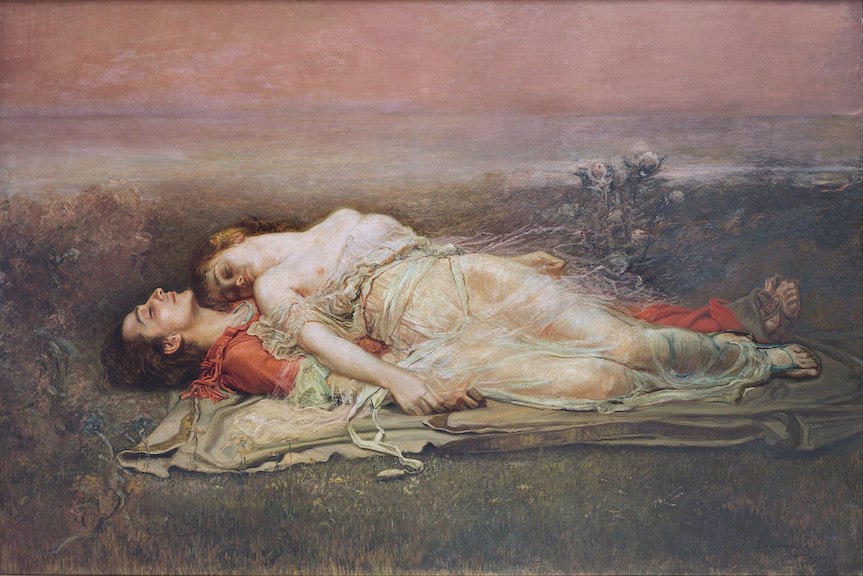
In the Charles VI card, a pair of very determined cupids shoot at three pairs of courtly lovers below. Two of the men on either side clasp their hearts, while the one in the middle can’t contain his passion for his lady. That’s what it was all about – Eros had 0 to do with marriage.
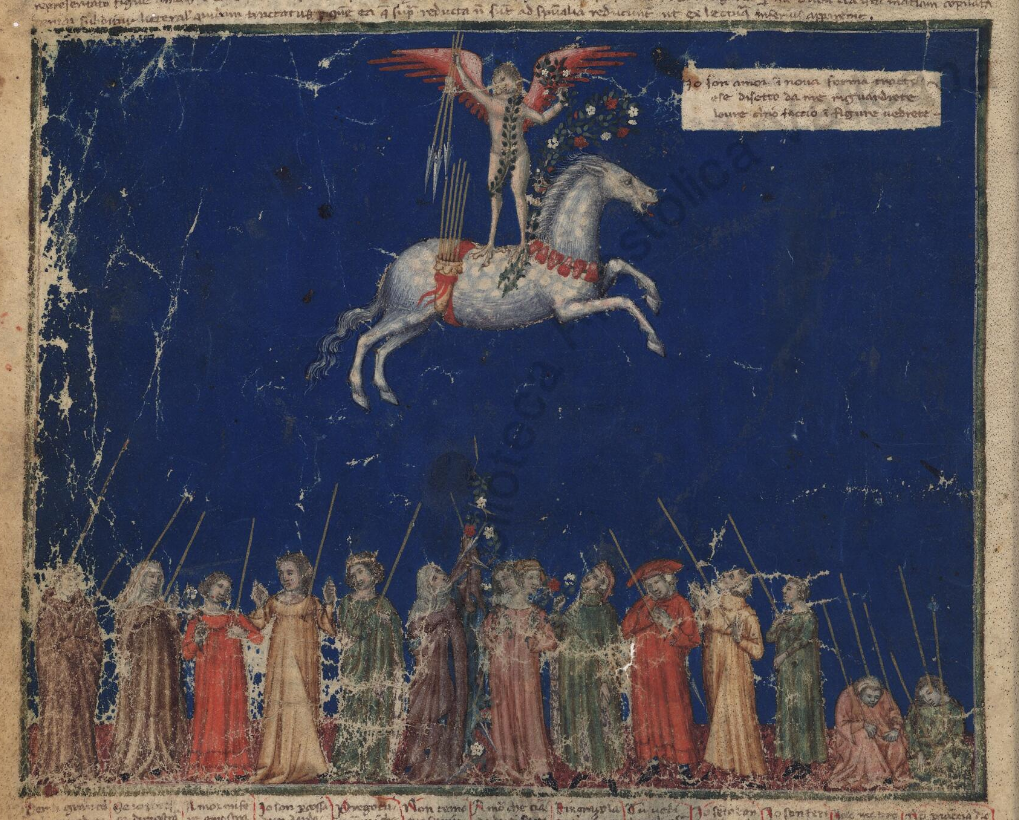
The Charles VI card recalls the imaginings of the early Renaissance poet and Giotto contemporary, Francesco da Barberino, who “deliberately inverted” love’s personification, emphasizing Cupid as the son of Mars and changed his image from “a personification of Divine Love to a personification of illicit Sensuality” by removing his blindfold.*
The connection to erotic love (Eros) and death is becoming established, and the card becomes less about marital love in the general sense. Much too dull for theatre, darling.

The Anonymous Tarot of Paris (ca 1650) gives us our first clue as to the French tradition. The amorous man holding in his arms a resigned, but not altogether unwilling woman might be modelled on Pluto and Persephone. The engraver has managed to convey much in her downward gaze, as if the man’s saying, ‘Come live with me, reign as my Underworld Queen!’ and she’s having an inner conflict, ‘Do I really want to go live down there…forever??’ Think of all the young women who must have felt this way through the centuries, marrying men they hardly knew, often far from home. The story of Bluebeard takes this very rational fear to its extreme.
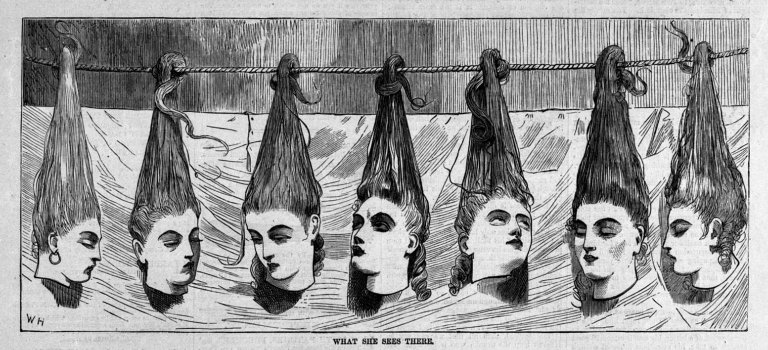
In ancient Greco-Roman times, love was rarely, if ever, the basis for marriage. A bride would effectively ‘die’ to her own family, transferred as property from father to husband, and would from here on have to worship at the altar of his family ancestors. Because it would be insulting to her own ancestral gods if she abandoned them willingly, a ‘faux’ kidnapping a la Pluto and Persephone had to be enacted, which is where the tradition of ‘carrying the bride over the threshold’ comes from. She has to pretend it’s not her own choice, that she was stolen!
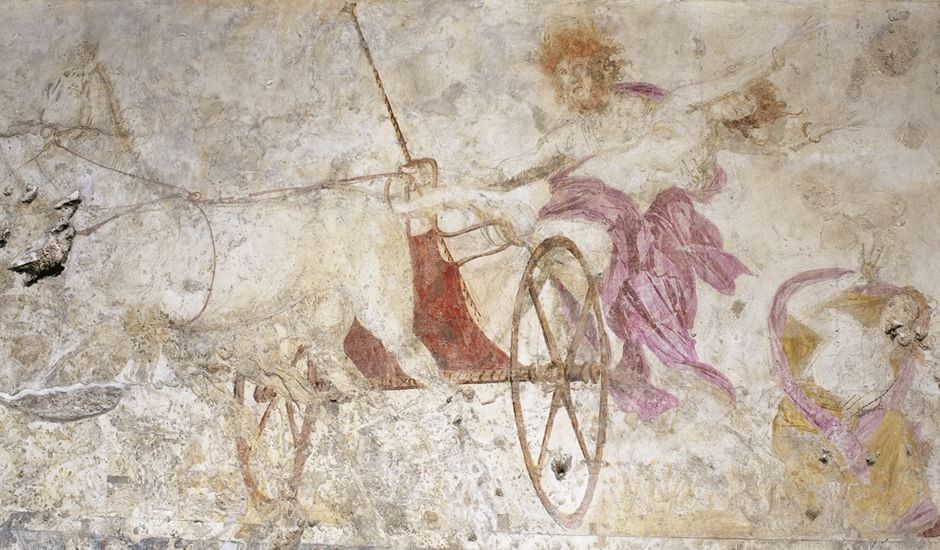
In actual fact, Persephone (‘bringer of destruction’, ‘bringer of death’, aka the ‘Iron Queen’) was already an Underworld ruler for a long time before the Hellenized myth, and the TdM card is perhaps faithful to this. Before Persephone’s abduction and while she’s above ground, she is called ‘Kore’ (‘maiden’), and as part of the Underworld Goddess triad with Demeter and Hecate, she’s also the ‘maiden’ to mother and crone. Her priestesses were called ‘kores’ (masc. ‘kouros’) and it’s possible that initiation involved ritual marriage with one, ie, ‘marrying death’, so that later, ‘death’ in the form of a beautiful, young, underworld partner awaited the initiate when the time came to cross that threshold. Nobody knows for sure.
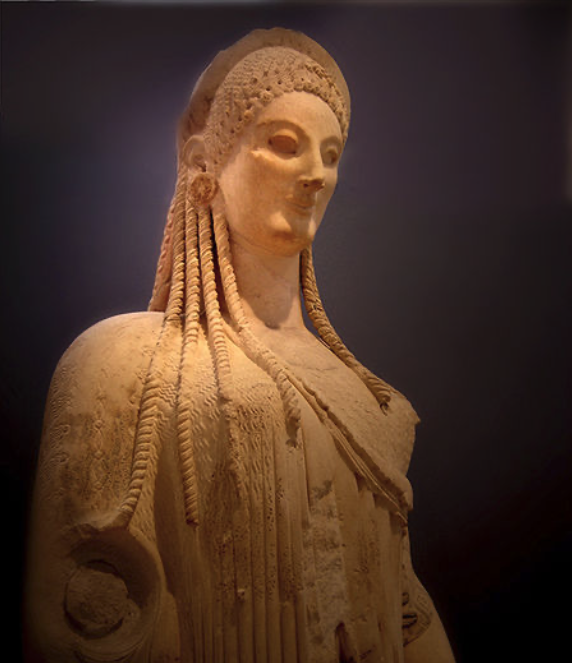
The connection to Persephone in Tarot of Paris becomes more honed and specific in the TdM card. Here, it is the man who some would assume is having to make a choice. He looks toward the woman wearing a crown of leaves or fronds, while his arms point toward the woman wearing a crown of flowers. The Pierre Madenié 1709 version makes it perfectly clear what kind: Narcissus, the flower Persephone was said to have been picking when she was snatched by Pluto. Further, if we look carefully at the halo around Eros above, in the Conver (type 2) versions, it is visibly skull-shaped. This can hardly be a printing mistake.
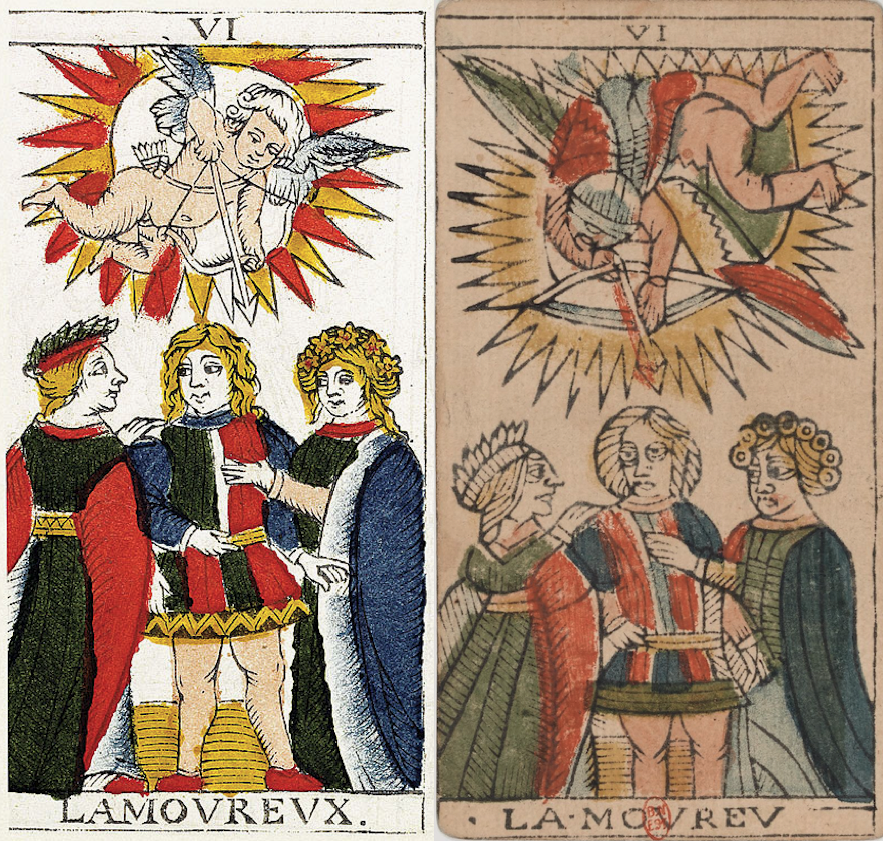

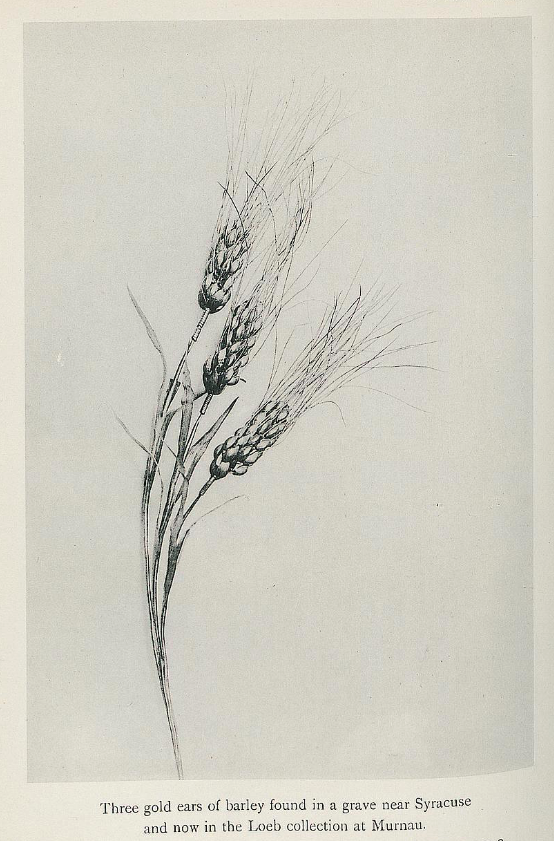
An ear of golden grain [barley, sometimes referred to as ‘corn’, though actual maize would not reach Europe until 1492] can be seen in the very first card. The Fool also has a similar shape dangling from his belt, though in this case I think it’s his passport – a leaf-shaped, gold, Orphic tablet. But anything gold, especially if flame-shaped, generally has to do with fire and the eternal, ever-resplendent spirit.
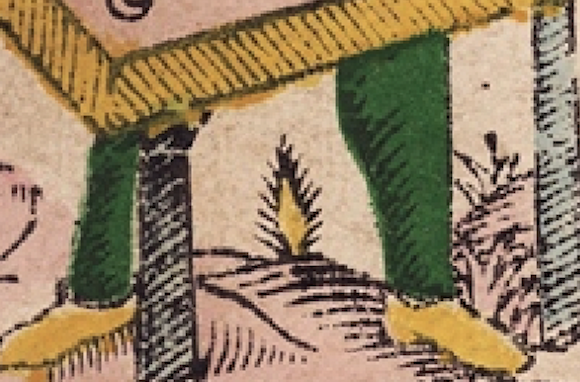
The movie still below is from a modern, rock-n-roll kitsch interpretation. Recognize it? Extra points if you are old enough!
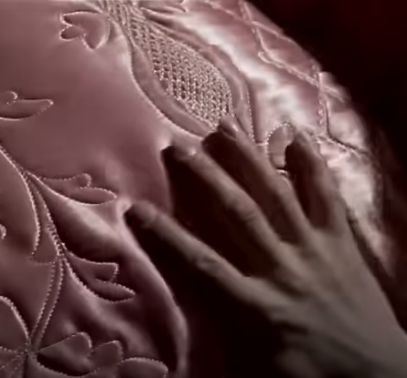
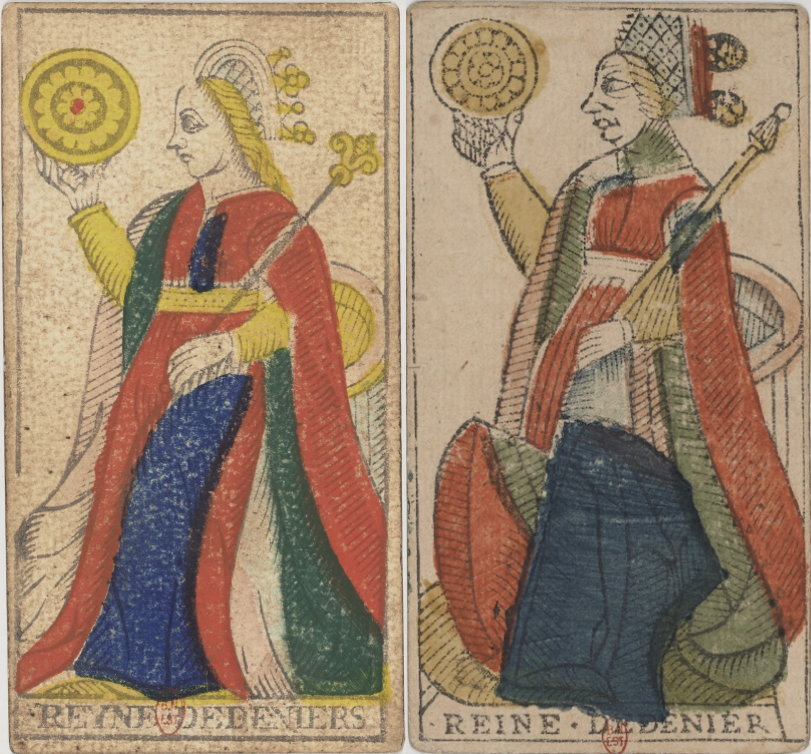
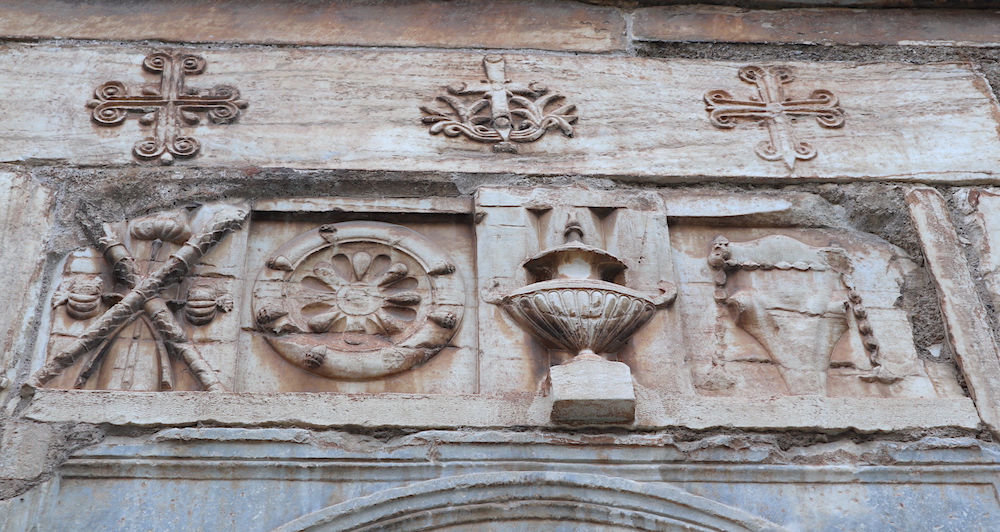
We should not be too rigid about naming precisely which mystery cult the cards might be pointing to, as the imagery seems to draw from several traditions as well as being mytho-alchemical. But the Eleusinian and Bacchic cults were inter-related, and one needn’t throw a stick far in ancient Greek myth to find some hero or heroine transgressing death in search of a loved one or sacred object and returning twice born and wiser or crazier for it. Dionysus, the Greek Osiris, was closely associated with alchemy, because his crop of expertise was the grape, and wine-making involved the essential fermentation process, from the blackened soil to the distillation of spirit. The long-haired Lover is certainly Dionysian, as his popularity with the ladies shows. To me it looks like they might be undressing him.
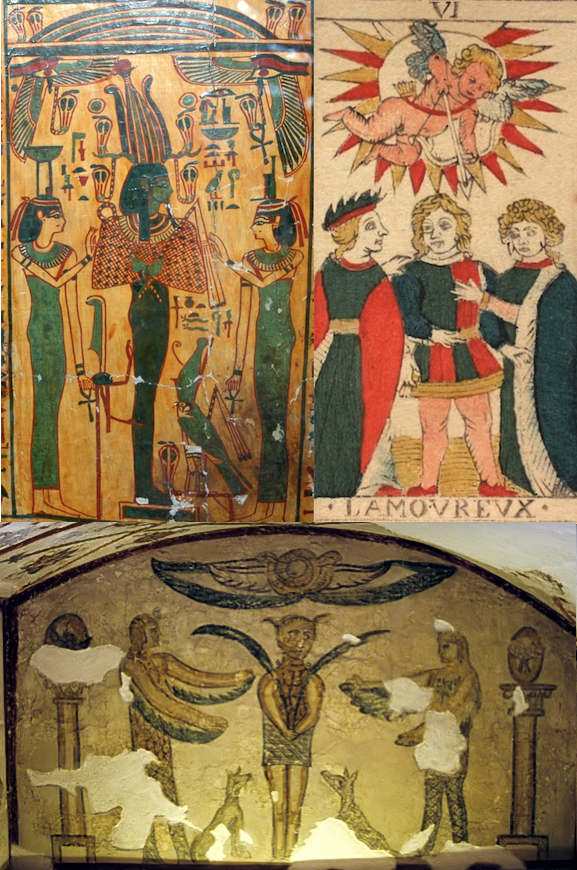
Worth a mention here is the similarity between the woman on the left of the Conver card with the Valet of Batons. Might this suggest a link to the Dionysian ritual phallus, or, to the club of Hercules, weighted/pulled toward the Underworld, while the young man looks ahead? Is he drawing up some chthonic energy, or, like the Juggler (prototype of the Valets), is he too young and inexperienced to recognize its ritual significance? Instead, maybe he’s using it to measure true, astronomical and visible horizons, with the intention of building a temple to his god…a Herculean task, surely.
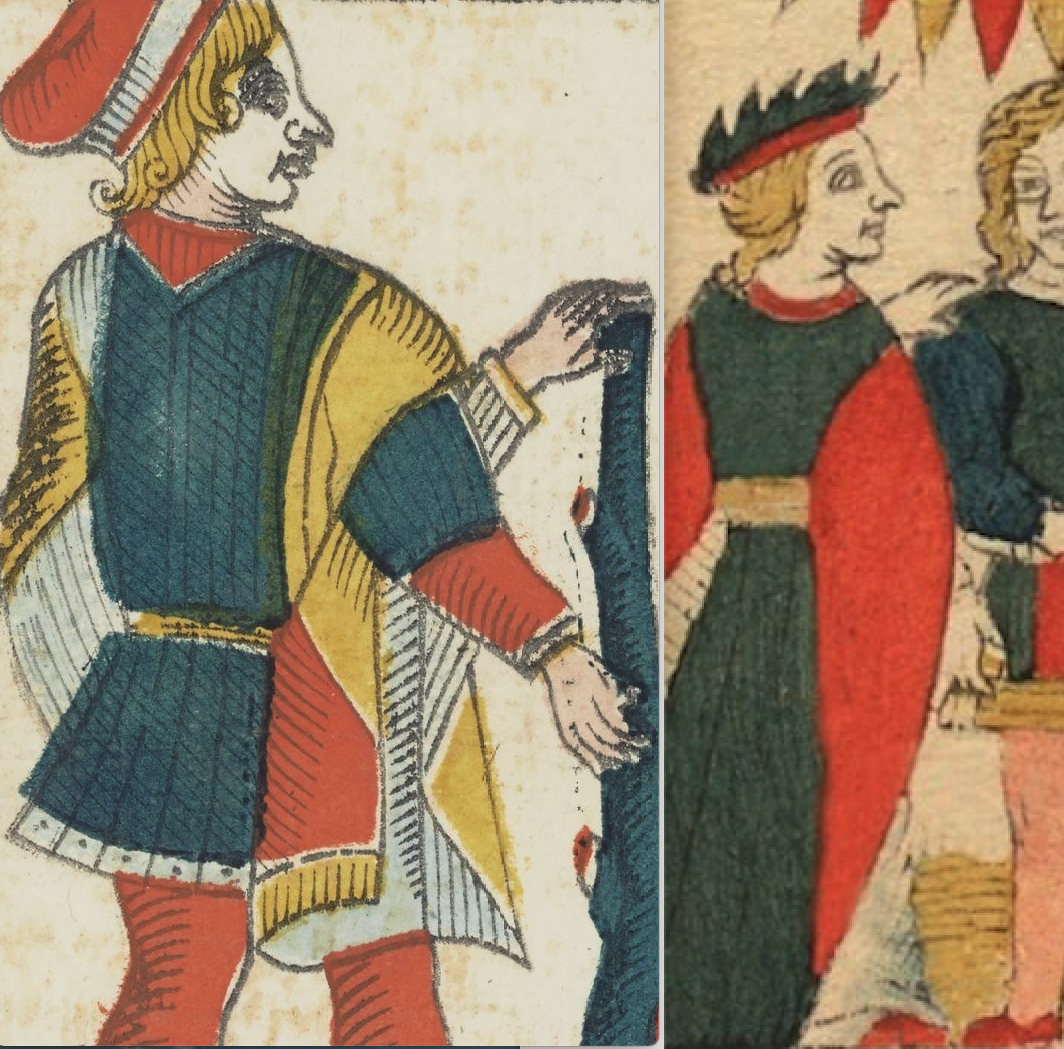
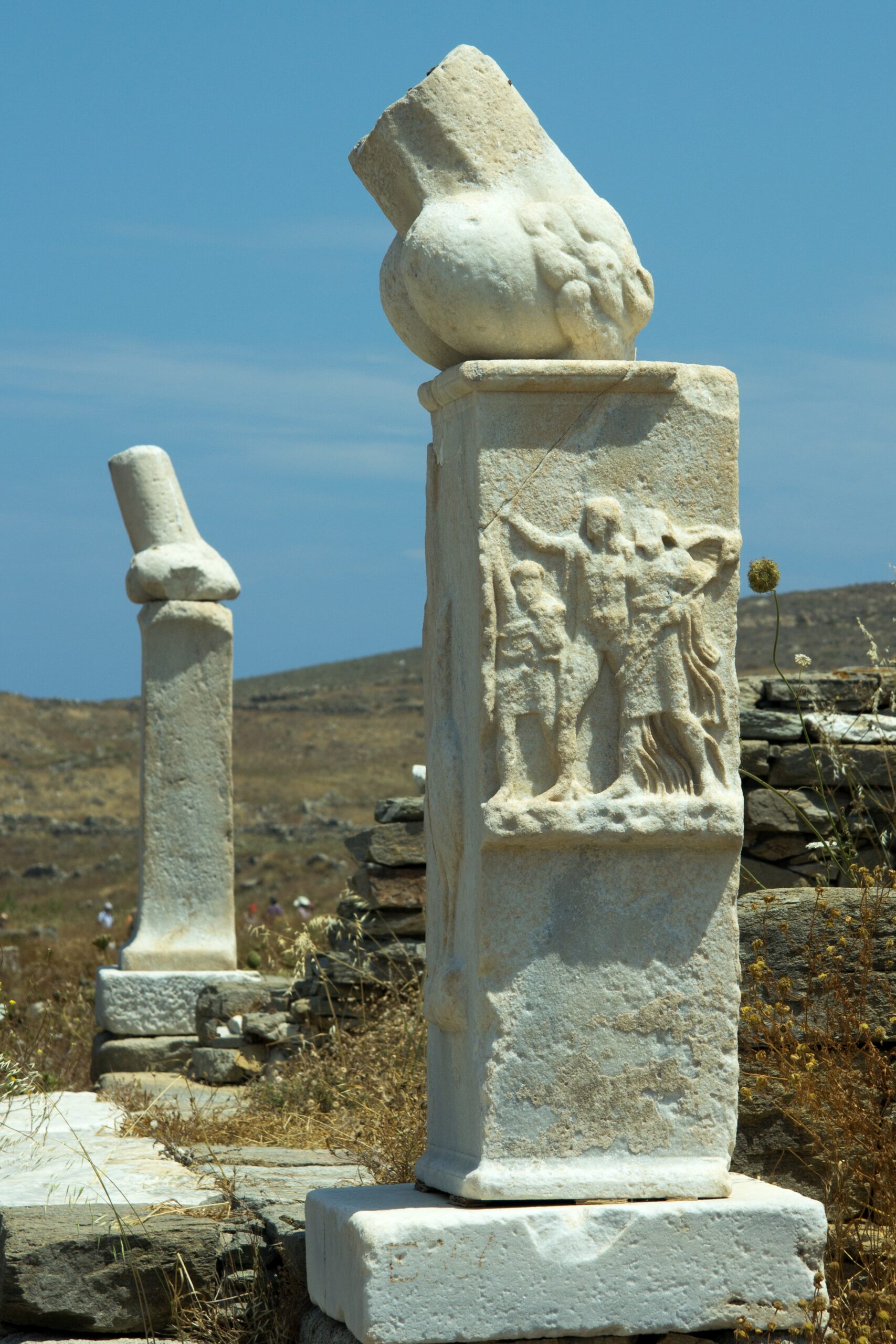
Hercules had to become an initiate in order to go kidnap Cerberus, the three headed hound of Hades, as his final labour. So if this card does relate to him, he’s likely not at the crossroads choosing between two women, but at the crossroads of the upper and lower realms, receiving initiation from two goddesses. In the next card, the newly-anointed, golden-crowned hero is in a liminal state, his lower half having descended into a square-shaped (matter/earth/Saturn) Chariot that is at least partly fixed to the ground (in type 2), resembling something funerary.
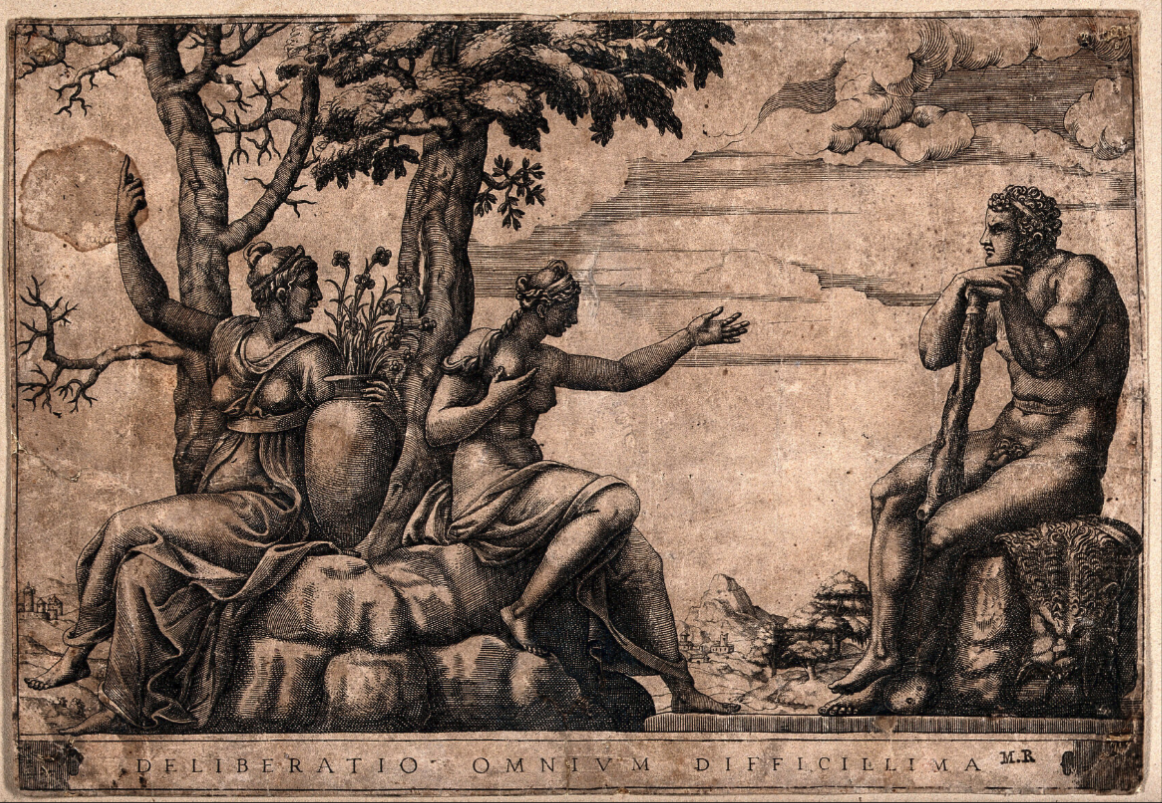
Eros, son of Aphrodite, was said to be able to overpower all the heroes, for love really does wipe out fear of death (Thanatos) and the loss of a love is akin to dying. I’ll be entertaining/tackling this topic further, from a different horizon, in an upcoming post about the Sun card. Stay tuned! ~rb
So come, my friends, be not afraid.
We are so lightly here.
It is in love that we are made;
In love we disappear.
***
Credits:
*Shelly MacLaren, “Or guarda tu …desta donna la forma”: Francesco da Barberino’s Poetic and Pictorial Invention (Dissertation)
Lyrics from ‘Boogie Street’ by Sharon Robertson/Leonard Cohen
All written content except quotations and meme is copyright ©Roxanna Bikadoroff and may not be re-used or reprinted without my permission. You are welcome to share the article via LINK and with a short pull quote/credit.
Thank you for being respectful.

